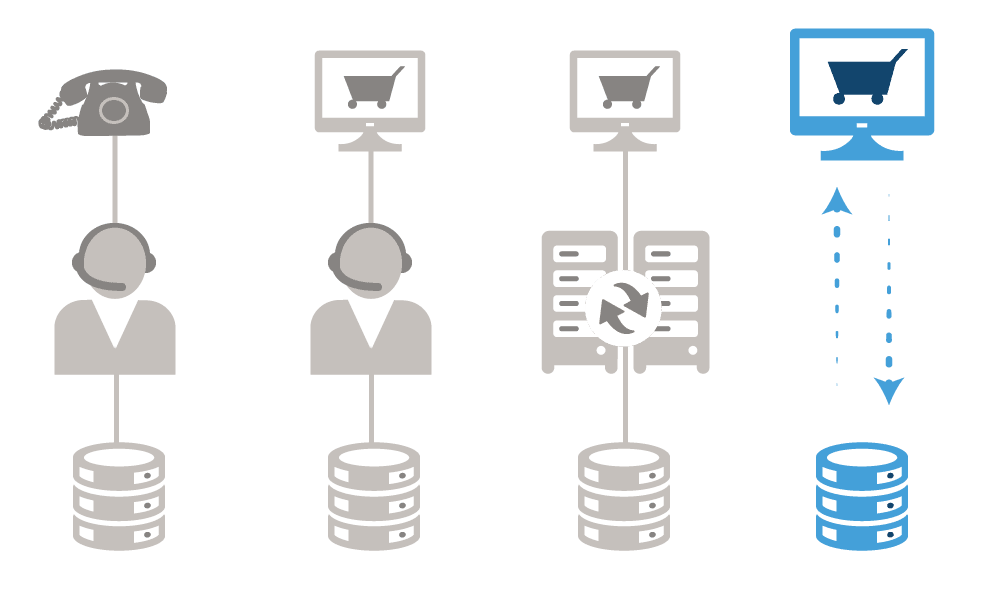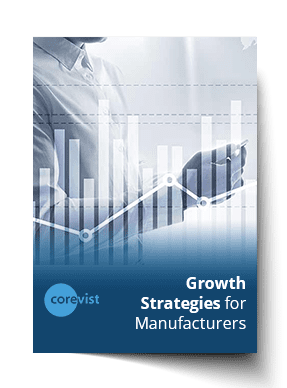Share
Author
George Anderson
Share
Streamline your OTC processes
Growth requires resources. And while increasing efficiency doesn’t necessarily correlate with revenue growth, it does free up resources for reinvestment in growth efforts. That’s why manufacturers who want to grow should consider how increasing internal scalability—particularly in their OTC (order to cash) cycle—can provide cost savings to fund growth initiatives.
Here are 4 strategies to improve internal scalability and free up resources for growth.
1. Eliminate price/availability calls to Customer Service
To eliminate wasteful processes, start with the most routine things you can find. We’ve worked with many manufacturers whose channel partners want to check price and availability before they even put an order together. Since these two simple data points already exist in SAP, it makes sense to eliminate manual calls for price and availability by giving customers access to these data points through self-service.
Typically, eliminating these calls requires a digital customer portal with real-time integration to SAP ERP. That way, customers can type in an SKU number and get real-time availability plus their personalized contract price, right in the portal.
With Customer Service freed up from handling these routine checks, they can focus on value-add activities to improve customer retention, increase average order value, and more.
NEW Report:
Growth Strategies for Manufacturers
Every manufacturer needs to grow in the digital age. Here’s the ultimate guide to growth strategies for manufacturers. Read now.
2. Eliminate phone/fax/email ordering (and manual order entry into SAP)
Most manufacturers’ channel partners have personalized pricing and inventory/ATP (available-to-promise) calculations which govern their transactions. They may also have personalized picklists which they’re allowed to order from, unique bundled pricing—and a whole host of other business rules.
That level of personalization is essential to each transaction. But mapping it in a digital customer portal isn’t a trivial undertaking. It’s the challenge which keeps many manufacturers from launching digital customer portals.
However, without a self-service ordering solution, your Customer Service staff will have to continue typing phone/fax/email orders into SAP, dealing with the inevitable order errors, and resolving them through customer callbacks. This drives up your cost to serve, eating up resources which you could invest in growth initiatives.
Order posting methods: Expensive vs. efficient

A digital portal with direct, real-time ERP integration (like Corevist) replaces an existing manual workflow in your OTC cycle.
If you’re going to eliminate phone/fax/email ordering (and replace them with self-service web ordering), the digital customer portal should be built on real-time integration to SAP ERP—including intelligent error messaging from SAP which helps the user create an error-free order. That way, every customer gets a personalized transaction driven by their business rules in SAP, and the new process doesn’t require manual callbacks.
Without that personalization, customers will fall back on phone/fax/email ordering (where they can get the personalization they need, through interaction with a customer service rep). That’s why SAP integration is essential in a digital customer portal.
3. Eliminate order tracking calls to Customer Service
Order tracking offers another opportunity for improving efficiency. Like checking price and availability, it’s a routine request for information which doesn’t actually require human expertise. If you can provide order tracking information through self-service, you can reduce or eliminate the time which your Customer Service staff spends on these routine inquiries. Your staff can switch to other, higher-value tasks—or you can reinvest resources in growth.
You already have the data which your customers need to track orders. It lives in SAP ERP and in the databases of shipping carriers. The key is to provide this data to customers through a self-service portal that includes real-time integration to SAP ERP (and to major carriers).
This is the thinking behind Corevist Order Tracking. It’s a self-service solution which launches in 30 days. Because it includes our SAP integration architecture, you can also expand the portal to full B2B eCommerce when you’re ready—without duplicate infrastructure investment.
4. Empower customers to pay down invoices and manage their accounts through self-service
Many manufacturers rely on manual, paper-based processes for sending account statements, receiving payments, and posting them to the account. These processes may involve your accounts payable department, your customer service department, or both. When human intervention is required, the process lacks internal scalability.
Getting account status, invoice history and status, and making payments are all routine actions in the customer journey. Like order tracking, price/availability checks, and order placement, these processes offer manufacturers great opportunities to improve internal scalability. With human intervention removed, you can reduce your cost to serve and provide customers with the self-service account management capabilities which they need.
The key is to choose a customer portal solution that supports your A/R processes through real-time SAP integration. With this kind of solution in place, you can empower your channel partners to manage their accounts and pay down invoices without the help of customer service or the A/R department. It’s a great way to free up resources for reinvestment in growth initiatives.
Want more?
Download our new report:
Growth Strategies for Manufacturers
We cover 18 growth strategies for manufacturers in the digital age. Read now.










